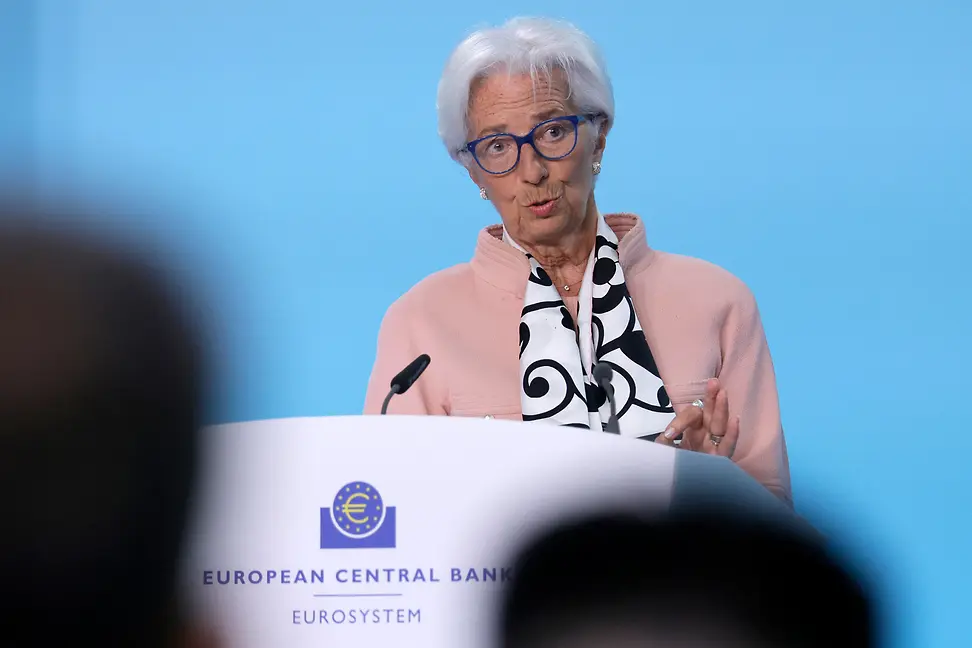The global economy is emerging from a long expansion - an extended summer. As momentum fades and US policy uncertainty grows, the outlook for the second half of 2025 is increasingly chilly.

After years of exceptional growth, signs of a shift are now clear. As we move through 2025, a cooler breeze is blowing through global markets.
Weaker labour markets, tighter credit, and subdued spending indicate a maturing cycle. While this may not signal a dramatic downturn, it does mark a quiet rewriting of the rules of risk and return.
In the United States, what began as a soft-landing story is now being shaped by less controllable forces. Trade friction, political volatility, and shifts in interest rate expectations and policy uncertainty have begun to cloud the picture. Tariff escalations are denting business and market confidence. Recent political shocks - like the so-called "Liberation Day" announcement - triggered market swings on par with the 2008 financial crisis and the COVID-19 pandemic.

Investment activity has become more selective. Hiring intentions have softened. So far, the US tariff policy has had less of an impact through direct economic costs than through its psychological effect: it is fuelling uncertainty, dampening confidence in economic momentum and putting companies under pressure to adjust.
The combination of declining sentiment, high interest rates and rapid inventory build-up in the US retail sector is creating a mix that calls for economic caution. Inflation appears likely to rise in the near term, but its underlying drivers are shifting - from rising prices due to strong demand to increases driven by higher costs, especially from tariffs tied to trade policy. Tariffs have jumped from 2.5 % to around 13 %, assuming current tariff levels remain in place, sharply amplifying inflationary pressure.
As a result, the US consumer price index is expected to peak at around 3.3 % in the third quarter before easing. In this environment, the US Federal Reserve remains cautious. While small interest rate cuts - possibly amounting to around half a percentage point - may still happen, any rate cuts are unlikely before the fourth quarter. At the same time, the yield curve could steepen moderately, especially if recession risks fade - although this brings the potential for renewed upward pressure on long-term interest rates.
The tension between slowing growth and sticky inflation is evident in US bond pricing. We continue to expect rate cuts to offer some relief, especially for bonds with short maturities. But the scope and timing of any easing have narrowed.

In Europe, the story is somewhat different with declining inflation, stable employment, and expected monetary easing by the European Central Bank (ECB). Six rate cuts are anticipated over the course of 2025 - four in the first half and two in the second - which should bring the key policy rate to around 1.5 % by year-end. Importantly, these are markets where returns on bonds - after accounting for inflation - have quietly moved back above zero.
Equity markets are beginning to tell two different stories. In the US, stock prices are high, not because of strong profits but because of buoyant risk appetite. The rebound in US equities has been driven by falling risk premiums, not earnings growth. There is little margin for error. By contrast, European equities appear less fully priced, and in some cases, overlooked. Smaller and mid-sized companies in particular are drawing renewed attention, benefiting from lower exposure to global tariff risk and from a more domestically anchored growth profile.
As different parts of the market move less in sync and price swings continue, active management is making a measured return. The retreat of passive investing reveals opportunities for those focusing on fundamentals.
As equity markets grow more selective, investors are also turning to assets that provide shelter from uncertainty. In times of geopolitical and macroeconomic uncertainty, gold tends to reassert its relevance. Today is no exception. The metal's appeal is being reinforced not only by its traditional safe-haven role, but also by growing doubts about the long-term stability of reserve currencies. Central bank accumulation, in particular, has added a structural tailwind.

Beyond gold, alternative strategies are gaining traction - not despite volatility, but because of it. Private debt and real assets are gaining appeal because they may hold up well when growth slows and prices rise. Hedge funds and specialised insurance-related investments, which had lost popularity in a market driven mostly by broad trends, are once again being assessed on their ability to provide returns that don't follow the ups and downs of the stock market. Private equity, while slower to revive, still holds long-term relevance - especially in industries where operational improvements can increase value.
China's transition from factory to consumer economy is proving difficult. Stagnating growth is weighing heavily on export-dependent countries.
We are approaching a stage in the cycle where capital is no longer chasing momentum, but clarity. That clarity is harder to come by in a world shaped by shifting central bank policies, fragmented politics, and evolving consumer habits.
The economic season is changing - not overnight, but unmistakably. This may be less a time of retreat - and more a time of reorientation - for those ready to act with insight and intent.
This communication is provided for information purposes only. The information presented herein provides a general update on market conditions and is not intended and should not be construed as an offer, invitation, solicitation or recommendation to buy or sell any specific investment or participate in any investment (or other) strategy. The subject of the communication is not a regulated investment. Past performance is not an indication of future performance and the value of investments and the income derived from them may fluctuate and you may not receive back the amount you originally invest. Although this document has been prepared on the basis of information we believe to be reliable, LGT Wealth Management UK LLP gives no representation or warranty in relation to the accuracy or completeness of the information presented herein. The information presented herein does not provide sufficient information on which to make an informed investment decision. No liability is accepted whatsoever by LGT Wealth Management UK LLP, employees and associated companies for any direct or consequential loss arising from this document.
LGT Wealth Management UK LLP is authorised and regulated by the Financial Conduct Authority in the United Kingdom.